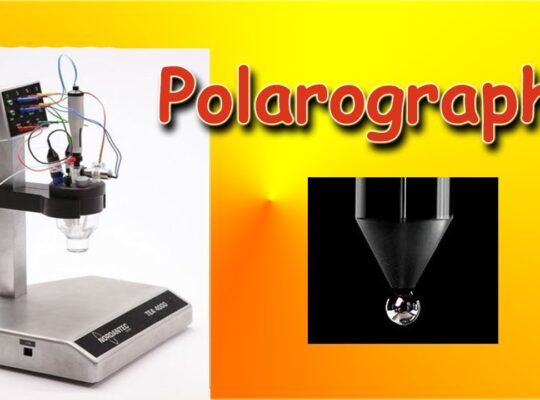Table of Contents
Introduction
Are you ready to dive into the world of immunostimulants? These substances have the power to boost our immune system and fight off infections. But what exactly are immunostimulants? They are a type of drug that can activate our immune cells and improve their response to invading pathogens.
Understanding the mechanisms of action of immunostimulants is crucial to fully harnessing their potential. By activating the innate and adaptive immune systems, inducing cytokines, and enhancing antibody production, immunostimulants can be used to treat a variety of diseases.
But before we can fully utilize their benefits, we must also be aware of their adverse effects, which can include autoimmune reactions and cytokine release syndrome.
Overall, immunostimulants have a promising future in personalized medicine and innovative therapies. So, let’s delve deeper into the world of immunostimulants and explore their mechanisms of action and practical application.
What are Immunostimulants?
Immunostimulants are substances that activate the immune system and help it fight infections and diseases. They are of two types- natural and synthetic immunostimulants. Natural immunostimulants are found in plants, certain foods, and natural products while synthetic immunostimulants are man-made and are used as drugs.
Natural immunostimulants such as echinacea, garlic, and turmeric have been used for centuries in traditional medicine. These substances are believed to have immune-boosting properties and help prevent infections. On the other hand, synthetic immunostimulants such as interferons and interleukins are used in the treatment of certain cancers, viral infections, and immunodeficiency diseases.
Understanding the various mechanisms of action of immunostimulants is crucial for developing effective therapies. These substances can activate the innate immune system by enhancing phagocytic activity of macrophages and natural killer cells. They can also trigger the adaptive immune system by activating T and B cells and aiding in antibody production. In addition, immunostimulants can induce the production of cytokines which play a key role in regulating the immune response.
It is important to note that immunostimulants can also have adverse effects such as autoimmune reactions, cytokine release syndrome, and drug interactions. Therefore, their use should be monitored, and the benefits and risks should be carefully weighed.
In conclusion, immunostimulants are an important tool in the prevention and treatment of diseases. They have a significant impact on the immune system and can be used for various applications, ranging from fighting infections to cancer therapy. However, their use should be carefully monitored to ensure their benefits outweigh the risks.
Mechanism of Action of Immunostimulants
Immunostimulants are substances that activate the immune system by enhancing its overall functionality against infectious agents and diseases. They accomplish this by stimulating the body’s immune response by upregulating various components of the immune system. These include the activation of innate and adaptive immune responses, cytokine induction, upregulation of major histocompatibility complex (MHC) molecules, and enhancement of antibody production.
Activation of innate immunity occurs when recognition of microbes and generation of signals by highly conserved pattern recognition receptors occur. This causes the release of cytokines and chemokines which actively recruit immune cells to the site of infection where they destroy microbes by phagocytosis, degranulation, or antibody-mediated methods.
Activation of adaptive immunity leads to the expansion of specific T and B cells that can recognize the infection agent. The cytokines produced during innate immune response support the development of adaptive immunity. Together, these aids in the clearance of infections, preventing future infections and establish memory responses.
Immunostimulants induce cytokines such as interferons, interleukins, and tumor necrosis factors, which help in controlling infections by boosting anti-viral and anti-tumor activity. They also enhance MHC molecule expression on the surface of immune cells, which is essential for the recognition of infected cells by T cells.
Immunostimulants also boost antibody production, which enhances the adaptive immune response to a particular infection. The antibodies produced are specific to the type of infection and provide immunity against the same in the future. This helps in preventing infections, even after exposure to the infection agent.
In short, immunostimulants enhance the immune responses against infectious agents and diseases by activating innate and adaptive immune responses, inducing cytokines, upregulating MHC molecules, and enhancing antibody production.
Application of Immunostimulants
Immunostimulants are a class of drugs that activate the immune system to fight infections, prevent diseases, and treat cancer. These drugs have found widespread use in treating various immunodeficiency diseases like AIDS, allergies, and chronic infections. Immunostimulants are also used as adjuvants in vaccines to enhance the immune response against infectious agents.
Cancer immunotherapy is a rapidly evolving field of medicine that uses immunostimulants to enhance the immune response against cancer cells. Immunostimulants like checkpoint inhibitors, cytokines, and CAR-T cells have shown remarkable results in treating several types of cancers like melanoma, lung cancer, and leukemia.
However, the use of immunostimulants is not without risks. Adverse effects like autoimmune reactions, cytokine release syndrome, and drug interactions are common with these drugs. Patients receiving immunostimulants need to be monitored closely for any adverse effects.
Despite the risks, the future of immunostimulants looks bright. Innovative therapies like CRISPR/Cas9 gene editing and monoclonal antibodies hold promise in revolutionizing the treatment of immunodeficiency diseases and cancers. Personalized medicine, where immunostimulants are tailored to individual patients’ genetic profiles, is also an exciting development in this field.
In conclusion, immunostimulants are a valuable class of drugs that have found broad applications in medicine. The mechanisms of action of immunostimulants are complex and involve the activation of the innate and adaptive immune systems. However, like all drugs, immunostimulants have adverse effects that need to be monitored. With the rapid pace of innovation in this field, the future of immunostimulants looks bright, and we can expect to see more exciting developments in the years to come.
Adverse Effects of Immunostimulants
Immunostimulants have the potential to activate the immune system to fight off disease, but they also come with a set of adverse effects. Autoimmune reactions, where the immune system mistakenly attacks our own cells, can be triggered by immunostimulants. Cytokine release syndrome, a condition where the immune system releases a large amount of cytokines, can lead to inflammation and even organ failure. Furthermore, immunostimulants can interact with other drugs, intensifying or reducing their effects.
While the benefits of using immunostimulants are evident, it’s crucial to keep in mind their potential for side effects. The decision to use them should be made in consultation with a healthcare professional.
Future of Immunostimulants
The future of immunostimulants looks promising with the development of innovative therapies and the application of immunostimulants in personalized medicine. Researchers are exploring the use of chimeric antigen receptor T-cell therapy (CAR T-cell therapy) and checkpoint inhibitors as innovative therapies for cancer. Both therapies activate the immune system to target cancer cells, leading to a new generation of cancer treatments. On the other hand, personalized medicine aims to deliver the right dose, at the right time, to the right patient. Immunostimulants will play a significant role in delivering personalized medicine, where the immune system will be used as a tool to diagnose, prevent, and treat diseases. In conclusion, the future of immunostimulants is exciting, with progressive research and development of innovative therapies and personalized medicine.
Conclusion
After delving into the complex mechanisms of action of immunostimulants, some key takeaways emerge. These compounds can activate both the innate and adaptive immune systems, enhancing their response to invading pathogens. This includes inducing cytokines, upregulating MHC molecules and antibody production. The potential applications of immunostimulants are vast, including treatments for immunodeficiency diseases, cancer immunotherapy, and vaccines. However, it’s essential to remain cautious and aware of potential adverse effects such as autoimmune reactions, cytokine release syndrome, and drug interactions. The future of immunostimulants looks promising, with innovative therapies and personalised medicine on the horizon. In summary, this field is continually evolving, and it’s crucial to keep an eye on future research directions.
Read this also : Pharmacology of Immunosuppressants: Understanding the Mechanism Behind Successful Organ Transplantation
Join World’s Biggest Pharm D Community : Pharm D Pro






